Make-up goes a long way in determining an actor’s ability to portray a character as per the demands of the narrative. Sathya Saran speaks to make-up stalwarts of the Hindi film industry to get a sense of what the art of make-up entails.
In the beginning it was just bare skin. Well-polished and clean-shaven male faces with perhaps a line of surma to make their eyes look more feminine. The clothes had to do the rest of the make-believe, and add the coquetry or the bashfulness as required.
.jpg)
The Indian actresses added a line of kajal extending beyond the eye line. Long, lotus-eyed damsels were in favour, and the kajal did the trick. Gauhar Jaan, the phenomenally famous singer who starred in countless black-and-white silent movies made up for the lack of colour on her lips by wearing dazzling brocades and silks from her personal wardrobe.
Perhaps it was Himanshu Rai’s Light of Asia which took the first big leap. Devika Rani took it on herself to create looks that were not rustled together out of the clothes in the actors’ wardrobes. Fitted costumes that flattered the body, carefully wrought jewellery pieces that complemented the clothes and make-up that enhanced the features and smoothened complexion flaws were revolutionary steps forward, taking the movies into the realm of glamour, adding to the drama and histrionics.

Other names too crop up: Baba Vardham, who gave Pandhari Jhukar his first lessons in make-up, Ram Tipnis, who was a leading name in the 1940s and ’50s. Bahadur also mentions Saroj Modi, who worked in Parsi theatre with Sohrab Modi when he moved to making films.
But it was Pandhari Jhukar who showed the magic make-up could create. When forced to leave his course in Fine Arts at the JJ School of Art, Bombay, due to monetary constraints, he transferred the artistic aesthetic to making up faces instead. Even while learning on the job, using imagination as well as his own creativity, Jhukar would find himself in demand across studios. Starting with Rajkamal he moved on to Chetan Anand, then K.A. Abbas whom he accompanied as part of the Pardesi unit to Russia. Pardesi, an Indo-Russian film, starred Nargis and Padmini, Prithviraj Kapoor and Balraj Sahni besides a Russian cast. Jhukar then worked with Yash Chopra, who also became a close friend.

Among his assistants was Bahadur Singh too. ‘Sometimes, he would let us “do” a face on our own,’ he adds. ‘Other times, it would be just touch-up work, because he had to rush off to another studio.’ Both Godambe and Singh remember working with their mentor on stars like Meena Kumari, Waheeda Rehman and Saira Banu. ‘Dilip Kumar was instrumental in Dada’s fame as an expert, as he was among the first to trust him with changing his look for his production, Ganga Jumna, which was shot in colour,’ Singh adds.
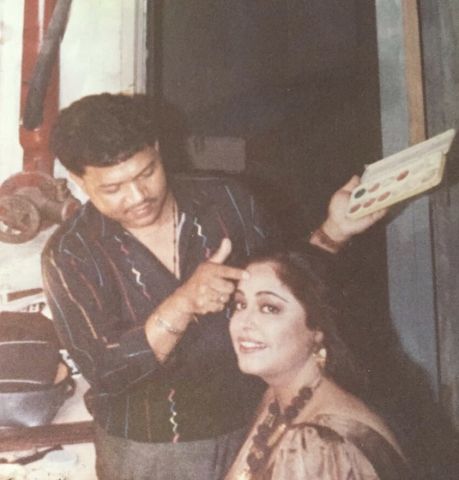
Some of the stars were innovators in their own right. Singh talks of Bindu, who often played the vamp, having a keen sense of make-up. She used a watery gloss over her lipstick, to add shine. Singh remembers working with the actress at the peak of her career, when they would go through four shifts in a day.

Concealers had not yet become a rage, so make-up men used moisturiser to smooth the skin, adding yellow or orange tones to cover under-eye circles. 725B was the favourite tone preferred by all heroines, though a darker shade would be pressed into use for contouring and shading. Singh remembers that ‘Egyptian’ was a favoured look, with dots running along the cheek to the chin to create a sharp facial line.
Applied in layers, make-up was heavy on the skin, and uncomfortable too, especially in the heat.
Explaining the favoured technique, Singh says, ‘We would first mix the foundation stick and apply it with a sponge till it was a smooth covering layer on the skin. It worked like a primer. Then we would use a brush and top up, to cover patches. The application of pancake that had been mixed in water would add a sheen. Blusher was then added for colour on the cheeks. For more glamourous looks, a product called Shining Rouge was pressed into action … diluted with water it would be added in a thin layer all over the face. Then the sponge would dry the face as the look had to be matte for the film camera. Bindu often used a Delicate Shining Rouge which cost 150₹ for instant glamour. She had a variety of creamy eye shadows to match her costumes. And as they were her personal products, she would always lock her bag, so no one else could use them without her permission.’
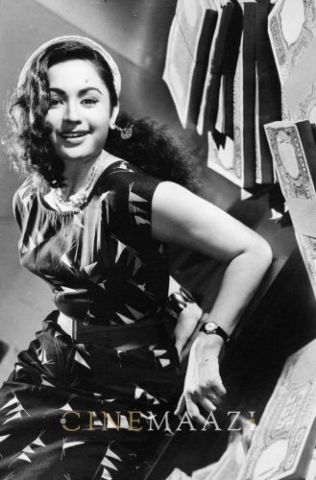
Singh who worked with the dancing star for years also remarks on her professionalism. ‘She was a workaholic, kept her body in good shape, and on the sets would read a book between takes and never indulge in idle talk,’ he says.
Over the years, the make-up man has grown in status, a fact evidenced in the rise in billing. While earlier a fee of 150₹ for a dance number by Helen where retouching was required constantly was considered a high fee, and most make-up men who were part of a unit would get 300 for a month plus 10₹ conveyance per day, by the mid 1980s, Singh remembers that as Anupam Kher’s personal make-up man he was getting 2000₹ a face per shoot, and Kher was working five shifts every day! And the legendary Mickey Contractor commands 100,000₹ a face!

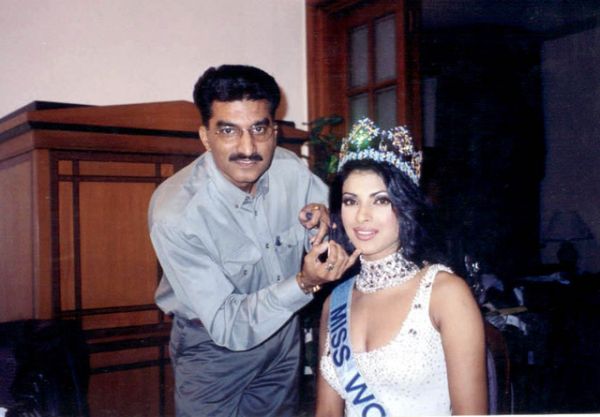
How often do stars dictate looks? Not usually, though there are some who can be quite irritating, according to both Singh and Godambe, who choose not to name them, anyway. Quite capable of walking out if a heroine interferes a lot with the make-up he is applying and keeps telling him what to do or not to do, Godambe has praise for Sridevi, Madhuri Dixit and others who despite their star status would ‘sit like a mannequin and let me do what was necessary to bring out the best in their faces’. He worked with them on the Lux ads, and each one of the stars was a delight to work with, he avers. ‘If an actress asks to do her own eyes or lips, I walk out. I never hand over my paint box to anyone else,’ he adds.

Natasha Nischol has a completely new take on where make-up and artists in the field are today. Her dream is to get the field the respect it deserves. Ditching a job as cabin attendant with Cathy Pacific, Natasha ended up doing three years at the London College of Fashion, specializing in make-up, ‘…meanwhile living in central London working two jobs and doing full-time college to be in the heart of it all. London is a great hub for fashion and art and street style and I was constantly stimulated and inspired.’ She trained with Jenny Shircore, an ex-BBC-trained artist and multiple BAFTA and Oscar nominee/winner, starting at the bottom rung where her job was to clean brushes and make tea or coffee. ‘I assisted her in the crowd room for Vanity Fair, Dirty Pretty Things and The Four Feathers before earning a place on the main team of The Phantom of the Opera. I also learned to think out of the box,’ Natasha says, adding, ‘I got the chance of a lifetime to work at the Royal Opera House and landed an opportunity working on an opera La Boheme. Working in theatre was a different experience altogether and a different kind of high – and what a theatre! A live audience and quick changes offered another kind of thrill altogether.’
.JPG/_MG_5493%20(1)__600x400.JPG)
‘Our work combined the best of Indian and International sensibilities and … and after working together for two years we decided to set up our company, fat mu, in October 2006, offering niche services to a niche client. We went on to design make-up and hair for films, working with the director to create a world that would be believable to its audience…’ Natasha adds.

Top of her list of achievements is the drag feature in the September 2019 issue of Vogue for which she worked with the top seven drag artists from across India. ‘I was given complete freedom and only told that each one had to be in one colour of the rainbow. I decided to go all out and merge traditional drag with fashion keeping in mind the colours, wanting to achieve a real international feel which I think we did,’ she says.
‘For me make-up has always been so much more than just lipstick and eyeshadow – and it can be so many different things to different people. It can be empowering to someone or a form of art to another … It doesn’t have to be what you think it is … it can be anything and many things.’
.jpg/A31I5180%20(1)__400x600.jpg)
Natasha is proud of the work she has done on Slumdog Millionaire. In her words, ‘Working with Danny Boyle and his A-lister HODs that he works with from film to film was a once-in-a-lifetime experience. We were the only HODs from India for make-up and hair and had to rise to that level and be open to all the challenges that would be thrown our way at any given time. It was an experience unlike any other and a complete pleasure as he is a genius and knows how to extract from people in the nicest way.’
Adding that she is passionate about changing the paradigm in India about how make-up is perceived/misinterpreted through talking/writing and educating, Natasha says she now singly runs the company and the academy.
Researching and creating looks twenty-first-century style
An example of creating a look in Gully Boy
Natasha Nischol
Creating characters for Gully Boy or any film for that matter is about creating a world that is believable to its audience … it’s lots of little things and the detailing that all add up. To briefly delve into a few of them we will start with Murad and MC Sher.
It was a challenge for me as in the script they are a mentor-prodigy duo but in real life, Siddhant is much younger than Ranveer. I had to think about how to make them look like they belonged to their characters, their communities and yet strike that balance of age and mentor-prodigy. I think that was achieved as a collective effort by all departments that worked to bring these characters to life.
To research Murad and his friends and family I went to Dharavi and Rizvi College a few times and shot pictures of people there who I thought related to the characters in the script. I got pictures from my driver’s family and community for the father and his bride’s wedding look. For Sher, I went and met the rappers during their rehearsals and saw and snapped their style – facial hair, beards, skin tones as well as tattoos which I asked them about so as to get an understanding of their thought processes behind them and why. For Safeena it was a combination of college and also friends of a colleague from similar backgrounds who were medical students. Each of the characters were styled based on elements taken from these references keeping in mind their own faces as well as their character’s background and lifestyle in mind.

Sher … a beard generally tends to add age to a face … so for Siddhant we decided to give him a beard that was styled to match his slickness and the buzz in his hair which worked for his cool rapper image – a current look which a lot of the rappers were sporting. We gave him a cut in his eyebrow also inspired by another rapper … we warmed up his complexion and gave him three tattoos designed specifically for him and aged … the first one being an Eminem symbol (fan + aspiration), the second a crown symbolizing he’s the king and his rise in the rap community and finally the third, a sher, lion, with rap lyrics written in Hindi around it specifically for him by Ankur Tiwari.
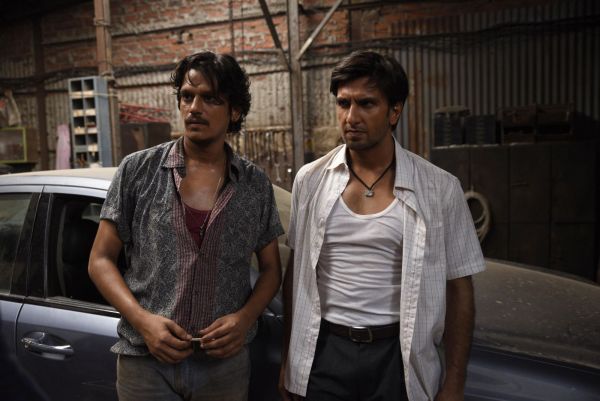
Moeen lives in the slums and works in a garage and smokes heavily … we warmed up his complexion, broke his skin down to reflect a harder life, gave him an old scar near the eyebrow from possibly getting into fights … worked dirt into his skin and nails – like it belonged there … kept his nails a bit long and unkempt. He always had sweat on him and we gave him age-appropriate nicotine stains on his teeth considering he was a heavy smoker, and added a bit of depth and redness around his eyes.
Tags
About the Author

Best known for her long association with Femina, which she edited for 12 years, Sathya Saran is also the author of a diverse variety of books. The Dark Side reflects her love of the short story, while the critically acclaimed biographies, 10 Years with Guru Dutt: Abrar Alvi's Journey; Sun Mere Bandhu Re: The Musical World of S.D. Burman and Baat Niklegi Toh Phir: The Life and Music of Jagjit Singh bear testimony to her love of cinema and music.
Sathya has just completed a biography of Pt Hariprasad Chaurasia. Till recently Consulting Editor of Harper Collins India Pvt Ltd., her assignments included editing the newly-released anthology on marriage Knot for Keeps.
Sathya teaches fashion journalism at NIFT Mumbai, Kangra and Srinagar. She has been a stage actor with Veenapani Chawla. Passionate about writing, she recently held the first of its kind Writers Conclave titled The Spaces Between Words, the festival sponsored by JSW, in partnership with The Hindu, at Kaladham near Hampi.
Sathya has written a television serial titled Kashmakash on marital problems.
Her column in Femina and Me magazine is now continuing to gain new fans as a guest column in Dainik Jagran.



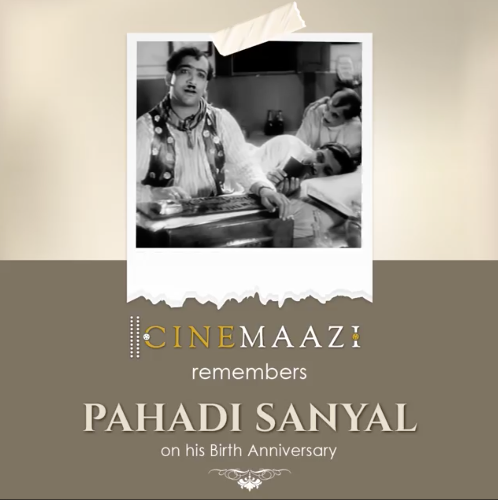

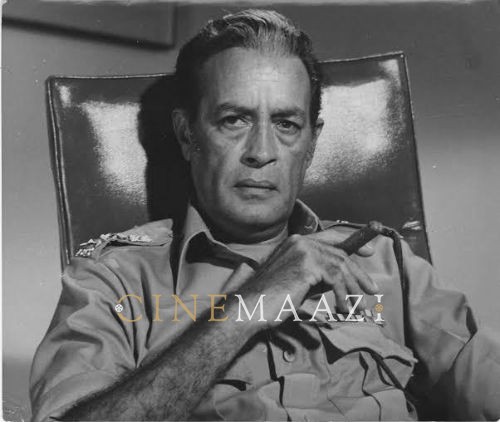

.jpg)


